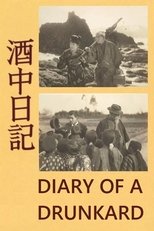
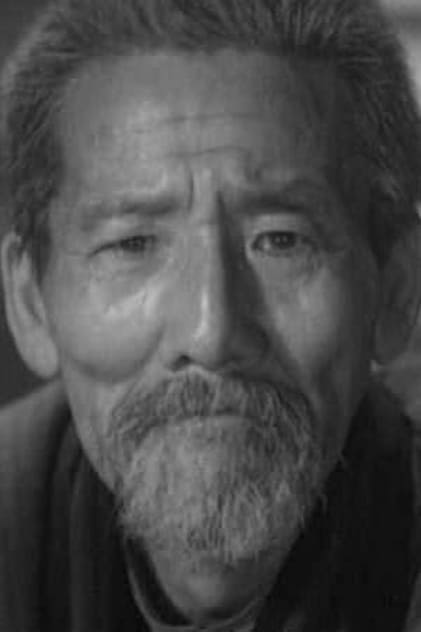
Kokuten Kōdō
Born: January 29, 1887
Died: January 22, 1960
in Takasago, Hyogo Prefecture, Japan
Died: January 22, 1960
in Takasago, Hyogo Prefecture, Japan
Kokuten Kōdō (高堂 国典 Kōdō Kokuten, 29 January 1887 – 22 January 1960) was a Japanese film actor. He appeared in more than eighty films from 1923 to 1959.
Movies for Kokuten Kōdō...
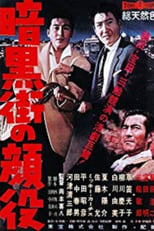
Title: The Big Boss
Released: January 15, 1959
Type: Movie
Ryuta and Mineo Komatsu are brothers, both yakuza (gangsters). Mineo, although complicit in crime, even murder, wants out of the gangster life, hoping to become a successful singer instead. Ryuta loves his brother, but Mineo's possible defection presents problems for the gang, and Ryuta realizes he must kill his brother if he wants to survive.

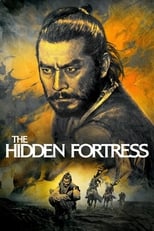
Title: The Hidden Fortress
Character: Old Man (uncredited)
Released: December 28, 1958
Type: Movie
In feudal Japan, during a bloody war between clans, two cowardly and greedy peasants, soldiers of a defeated army, stumble upon a mysterious man who guides them to a fortress hidden in the mountains.

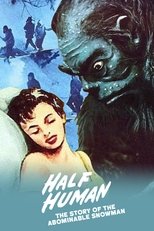
Title: Half Human: The Story of the Abominable Snowman
Character: Mountain Tribe Leader
Released: December 1, 1958
Type: Movie
An American scientist tells two colleagues about the finding of an abominable snowman living in the Japanese alps, where it is worshipped by a remote tribe as a god, and how it was discovered by modern man after it raided a ski-ers' shelter following an avalanche, killing all inside. This is an adaptation of the Japanese film Ju Jin Yuki Otoko with added American-made footage, narration and music track.


Title: The Eleventh Hour
Released: November 24, 1957
Type: Movie
Based on a 1956 television feature on Japan’s national network, NHK, this is one of Uchida’s rarest films. A socially conscious drama with a contemporary backdrop, Dotanba focuses on the attempts to rescue a group of trapped miners. The title is a figure of speech — (essentially “last minute” or “eleventh hour”) — that refers to a situation of peril. The film boasts a script co-written by Uchida and Akira Kurosawa’s frequent screenwriter, Shinobu Hashimoto, and stars Kurosawa’s frequent star Takashi Shimura.

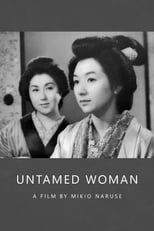
Title: Untamed Woman
Character: Kinshichi
Released: May 28, 1957
Type: Movie
A woman marries, gives birth to a stillborn child, and divorces, falls in love with a hotel-keeper, only to find herself subordinated to his drive for success, takes up with a tailor who cannot console himself with her strong personality.

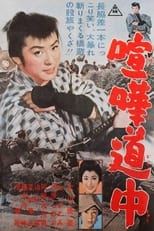
Title: The Fighting on The Trial
Released: May 12, 1957
Type: Movie
Hanjiro of Kusama searches for his little sister Oyuki, who went missing after being desecrated by Hikosaku Tokurai three years ago. The first film in a series about the adventures of the wandering yakuza Hanjiro from Kusama.


Title: The Horse Boy
Released: February 19, 1957
Type: Movie
A humble page fathers a child by the daughter of a clan official and is banished. Years later, the child, now a stable boy, is reunited with his father, but feudal codes threaten their happiness. Uchida’s poignant masterpiece condemns the inflexible class system and launches an indictment of values that favor symbolic objects over human life. The film’s focus is on character rather than swordplay, and charged performances - especially child actor Motoharu Ueki - add to the emotional power.


Title: Throne of Blood
Character: Military Commander
Released: January 15, 1957
Type: Movie
Returning to their lord's castle, samurai warriors Washizu and Miki are waylaid by a spirit who predicts their futures. When the first part of the spirit's prophecy comes true, Washizu's scheming wife, Asaji, presses him to speed up the rest of the spirit's prophecy by murdering his lord and usurping his place. Director Akira Kurosawa's resetting of William Shakespeare's "Macbeth" in feudal Japan is one of his most acclaimed films.


Title: Godzilla, King of the Monsters!
Character: Old Man on Hill on Oto Island (uncredited)
Released: April 27, 1956
Type: Movie
During an assignment, foreign correspondent Steve Martin spends a layover in Tokyo and is caught amid the rampage of an unstoppable prehistoric monster the Japanese call 'Godzilla'. The only hope for both Japan and the world lies on a secret weapon, which may prove more destructive than the monster itself.

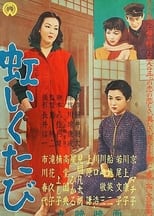
Title: A Rainbow at Every Turn
Released: February 19, 1956
Type: Movie
Momoko and Asako are half sisters, daughters of the famous architect Tsuneo Mizuhara, who also have another half sister in Kyôto, Wakako, whom they have not had. While Asako is a sweet young lady, Momoko, the eldest, goes out with whomever she wants, thus hiding the trauma caused by seduction and abandonment during the war by young Keita Aoki. One day Keita re-enters her life.

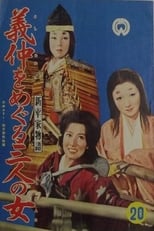
Title: Three Women Around Yoshinaka
Released: January 15, 1956
Type: Movie
The story of Yoshinaka during the tumultuous period of warring related to us in the Heike Monogatari. Close in setting to Kinugasa’s famous Gate of Hell (1953).

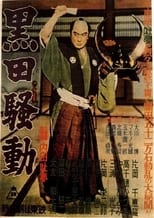
Title: The Kuroda Affair
Released: January 8, 1956
Type: Movie
This adaptation of a Hideji Hojo novel, about the historical uprising of the Kuroda clan in 1633, is told through the eyes of retainer, Daizen. As his clan’s new leader, Tadayuki, becomes increasingly militant in his opposition to the Tokugawa shogunate, Daizen is forced to reconcile his loyalty to the clan with his loyalty to Tadayuki, who seems dead set on entangling the clan in destructive conflict. The Kuroda Affair’s mise-en-scène is said to have influenced future Toei director Eiichi Kudo. The film also features two of the greatest stars of Japanese period cinema, Chiezo Kataoka and Ryutaro Otomo.

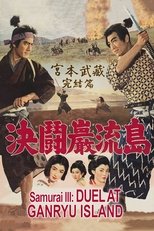
Title: Samurai III: Duel at Ganryu Island
Character: Old Priest Nikkan (uncredited)
Released: January 3, 1956
Type: Movie
A humble and simple Takezo abandons his life as a knight errant. He's sought as a teacher and vassal by Shogun, Japan's most powerful clan leader. He's also challenged to fight by the supremely confident and skillful Sasaki Kojiro. Takezo agrees to fight Kojiro in a year's time but rejects Shogun's patronage, choosing instead to live on the edge of a village, raising vegetables. He's followed there by Otsu and later by Akemi, both in love with him. The year ends as Takezo assists the villagers against a band of brigands. He seeks Otsu's forgiveness and accepts her love, then sets off across the water to Ganryu Island for his final contest.

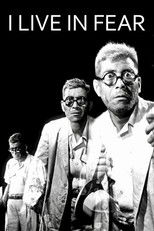
Title: I Live in Fear
Character: Workers' Older Family Member
Released: November 22, 1955
Type: Movie
Kiichi Nakajima, an elderly foundry owner, is convinced that Japan will be affected by an imminent nuclear war, and resolves to move his family to safety in Brazil. His family decides to have him ruled incompetent and Dr. Harada, a Domestic Court counselor, attempts to arbitrate.



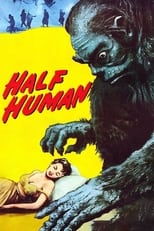
Title: Half Human
Character: Tribal Chief
Released: August 14, 1955
Type: Movie
Three competing parties all race against time to track down an elusive creature known only as the Snowman.

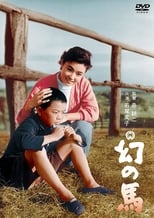
Title: The Phantom Horse
Released: July 20, 1955
Type: Movie
Following the tragic death of his father, a young boy's family trains his horse to compete in the local derby.

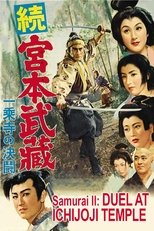
Title: Samurai II: Duel at Ichijoji Temple
Character: Old Priest Nikkan (uncredited)
Released: July 12, 1955
Type: Movie
After years on the road establishing his reputation as Japan's greatest fencer, Takezo returns to Kyoto. Otsu waits for him, yet he has come not for her but to challenge the leader of the region's finest school of fencing. To prove his valor and skill, he walks deliberately into ambushes set up by the school's followers. While Otsu waits, Akemi also seeks him, expressing her desires directly. Meanwhile, Takezo is observed by Sasaki Kojiro, a brilliant young fighter, confident he can dethrone Takezo. After leaving Kyoto in triumph, Takezo declares his love for Otsu, but in a way that dishonors her and shames him. Once again, he leaves alone.

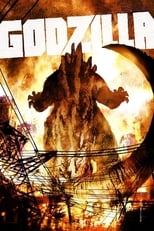
Title: Godzilla
Character: The Old Fisherman (uncredited)
Released: November 3, 1954
Type: Movie
Japan is thrown into a panic after several ships are sunk near Odo Island. An expedition to the island led by Dr. Yemani soon discover something far more devastating than imagined in the form of a 50 meter tall monster whom the natives call Gojira. Now the monster begins a rampage that threatens to destroy not only Japan, but the rest of the world as well.

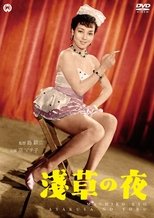
Title: 浅草の夜
Character: Gosuke
Released: July 14, 1954
Type: Movie
A young scriptwriter with a yakuza upbringing, an iron-fire dancer, a young painter, and a pure-hearted downtown girl fall in love in Asakusa in this entertaining tale of love and action.

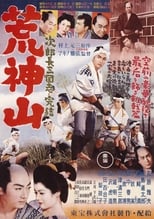

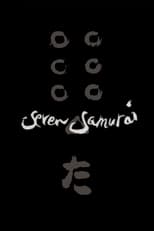
Title: Seven Samurai
Character: Gisaku, the Old Man
Released: April 26, 1954
Type: Movie
A samurai answers a village's request for protection after he falls on hard times. The town needs protection from bandits, so the samurai gathers six others to help him teach the people how to defend themselves, and the villagers provide the soldiers with food.

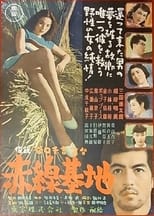
Title: Red-Light Bases
Character: Jusaku Kawanabe
Released: December 8, 1953
Type: Movie
Story about a poor Japanese woman living near an American army base who resorts to prostitution.

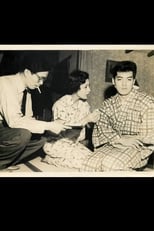

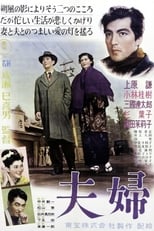
Title: Husband and Wife
Released: January 22, 1953
Type: Movie
A married couple looking for an apartment move in with the husband's co-worker, a widower. The husband becomes jealous of the widower and his wife.

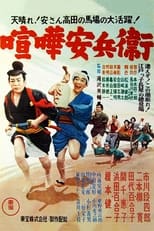
Title: Fighting Yasubei
Released: July 30, 1952
Type: Movie
Yasube Nakayama left the clan and lives in Edo. One day, Yasubei visits his uncle Rokuroemon Kanno to borrow money from a moneylender in the amount of 13 ryo in order to save Oteru, the daughter of a merchant. However, the next day, Rokuroemon was killed in a fight by the Murakami brothers. Yasubei rushed to the scene, took revenge and became the husband of Miya, the daughter of Horibe Yahei.

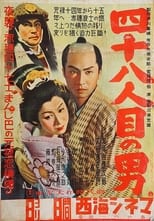
Title: Forty-Eight Man
Character: Kira Uenosuke
Released: June 26, 1952
Type: Movie
Jidai-geki by Kiyoshi Saeki

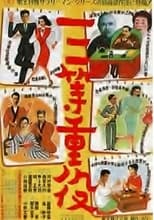
Title: Third Class Executives
Released: May 30, 1952
Type: Movie
1950s Japanese comedy.

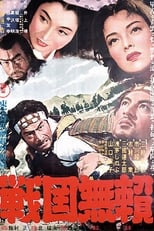
Title: Sword for Hire
Released: May 22, 1952
Type: Movie
Soldiers Hayate and Yaheiji secretly escape from their besieged castle. Hayate has left behind his lover, Kano. On his way, Hayate is wounded and cared for by O’Ryo, who falls in love with him. But when Hayate accidentally kills her caretaker, he flees, with O’Ryo in pursuit. Subsequently, Hayate's comrade Yaheiji falls in love with Oryo. Kano, the lover left behind by Hayate, believes him dead, and becomes involved with another soldier, Jurota. When Jurota defects to the opposing army, he takes Kano with him. A double set of love triangles has developed, wherein each man and each woman loves one and is loved by another. Finally only combat and self-sacrifice can untangle the weave.

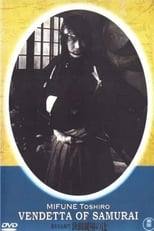
Title: Vendetta of a Samurai
Released: January 3, 1952
Type: Movie
The famous showdown at Kagiya corner has been told many times, but never before with the realism and intensity of this version scripted by Kurosawa Akira and starring Mifune Toshiro as the famed swordsman who must face his best friend as they are forced to take opposite sides in a vendetta caused by the murder of a family member. Told mostly in flashback as the avengers await the arrival of their quarry, this film displays true heroism in the face of fear as most of the combatants, while of the samurai class are not skilled swordsmen. They contrast sharply with the true warriors involved in this battle. Araki Mataemon (Mifune), who was not only a direct student of Yagyu Munenori, but the founder of his own sword style under the Yagyu name is a powerful force ready to assist his brother-in-law against the murderer's allies that include not only another noted sword teacher, but the deadly spear of Katsumi no Hanbei.

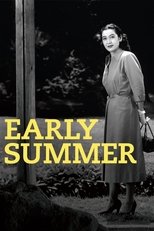
Title: Early Summer
Character: Old Uncle
Released: October 3, 1951
Type: Movie
A 28-year-old single woman is pressured to marry.


Title: The Blue Pearl
Character: Noe's uncle
Released: August 3, 1951
Type: Movie
The Blue Pearl depicts the interplay between a young man from Tokyo and two ama (pearl divers; literally “women of the sea”) in a superstitious coastal town. Though raised within the same tradition-bound crucible, the two women – Noe and Riu – are portrayed as diametric opposites; the former meek but affectionate, the latter strong-willed but jaded by a tryst with metropolitan life.

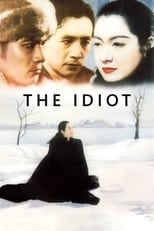
Title: The Idiot
Character: Junpei
Released: May 23, 1951
Type: Movie
Kameda, who has been in an asylum on Okinawa, travels to Hokkaido. There he becomes involved with two women, Taeko and Ayako. Taeko comes to love Kameda, but is loved in turn by Akama. When Akama realizes that he will never have Taeko, his thoughts turn to murder, and great tragedy ensues.

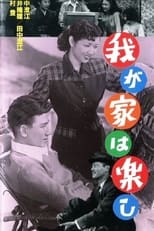
Title: Home Sweet Home
Released: March 21, 1951
Type: Movie
The Ueki family may not be wealthy, but smiles are never in short supply. The father is awarded prize money for 25 years of service to his workplace, but has it stolen on the way home from the ceremony...

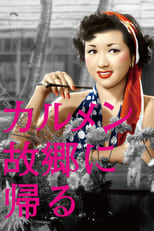
Title: Carmen Comes Home
Released: March 21, 1951
Type: Movie
A rural village elder plans an event on the return of a farmer's daughter from the city, unaware that she has become a Westernized burlesque artist.

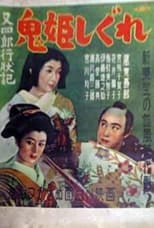
Title: Conduct Report on Matashiro: The Devil Princess and Winter Rain
Character: Shige'emon Otobe
Released: February 11, 1951
Type: Movie
Jidai-geki by Nobuo Nakagawa. Most likely a star vehicle for Kanjuro Arashi


Title: Sasaki Kojiro
Released: December 19, 1950
Type: Movie
Director Hiroshi Inagaki's early version of the life and death of famed swordsman Sasaki Kojiro. Otani Tomoemon gives a brilliant performance as Sasaki Kojiro, who rises from humble beginnings to national fame, and a young Toshiro Mifune appears as the legendary master swordsman Miyamoto Musashi for the first time and essentially sets the standard for future portrayals.This masterpiece is based on the original story as written by noted author Murakami Genzo and is far superior to any other versions. Following Kojiro from his earliest days through his fateful meeting with Musashi, this movie is filled with exciting and dramatic moments culminating in the best version of the final duel ever seen on film.

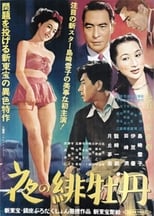
Title: Red Peony of Night
Released: December 8, 1950
Type: Movie
A romantic melodrama about the shifting relationship between Ryosuke and Miki as their precarious employment and social circumstances shift around them.

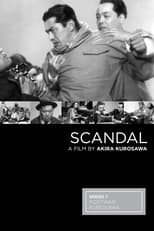
Title: Scandal
Character: Old Man #1
Released: April 26, 1950
Type: Movie
A celebrity photograph sparks a court case as a tabloid magazine spins a scandalous yarn over a painter and a famous singer.


Title: Street of Violence
Character: Kuga
Released: February 26, 1950
Type: Movie
An attempt is made to suppress a journalist's investigation of collusion between a rural police chief and the local gangster bosses.


Title: Stray Dog
Character: Old Landlord
Released: October 17, 1949
Type: Movie
A bad day gets worse for young detective Murakami when a pickpocket steals his gun on a hot, crowded bus. Desperate to right the wrong, he goes undercover, scavenging Tokyo’s sweltering streets for the stray dog whose desperation has led him to a life of crime. With each step, cop and criminal’s lives become more intertwined and the investigation becomes an examination of Murakami’s own dark side.

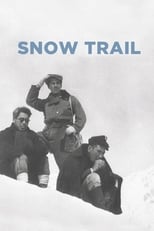
Title: Snow Trail
Character: Haruko's Grandfather
Released: August 5, 1947
Type: Movie
Three bank robbers, Eijima, Nojiri, and Takasugi, flee the police and escape into the mountains. At an inn high in the Japanese Alps, Eijima and Nojiri encounter a young woman and her father, as well as Honda, a mountaineer. The inn folk do not realize their guests are wanted criminals and the visitors are treated with great kindness. Honda volunteers to lead them over the mountains, but Eijima's paranoia endangers all of them as they make the perilous trip.

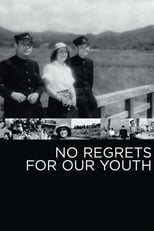
Title: No Regrets for Our Youth
Character: Mr. Noge
Released: October 29, 1946
Type: Movie
Yukie, the well-bred daughter of a university professor, is shocked when her father is relieved of his post for his political teachings during a purge of anti-militarism in pre-war Kyoto. Years go by as she is courted by two of her father's former students; one a fiery leftist, the other more moderate and equable.

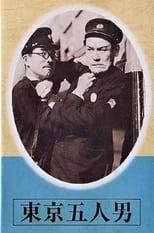

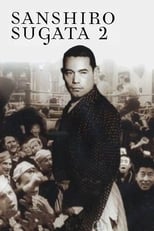
Title: Sanshiro Sugata Part Two
Character: Buddhist Priest Saiduchi
Released: May 3, 1945
Type: Movie
In this government-suggested sequel, Sugata again grows as a judo master, and demonstrates his (and by extension, all Japanese) superiority to the foreign warrior.

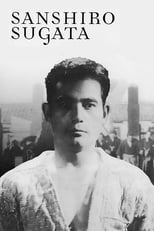
Title: Sanshiro Sugata
Character: Buddhist Priest
Released: March 25, 1943
Type: Movie
The story of Sanshiro, a strong stubborn youth, who travels into the city in order to learn Jujutsu. However, upon his arrival he discovers a new form of self-defence: Judo. The main character is based on Shiro Saigo, a legendary judoka.

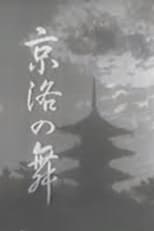
Title: Dance of the Capital
Released: December 11, 1942
Type: Movie
Hiromasa Nomura World War II era film


Title: Green Earth
Released: April 1, 1942
Type: Movie
Set in Qingdao, China, a Japanese company locates an office there and begins work and cooperation with a local Chinese company for business. Many Japanese engineers also move to China, with their families, for the company in order to construct a canal. There are young Chinese resisting the Japanese in this area.

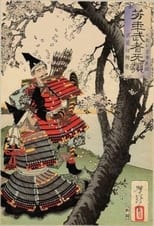
Title: Musashibo Benkei
Released: January 7, 1942
Type: Movie
A 1942 Jidaigeki by the veteran jidaigeki filmmaker Kunio Watanabe about the legendary warrior Musashibo Benkei
with Hideko Takamine portraying Minamoto no Yoshitsune (who is, of course, a man).
The film climaxes in the famous encounter/fight btw Benkei and Yoshitsune at the Gojo Bridge.

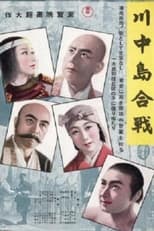
Title: The Battle of Kawanakajima
Character: Hiryûji Murakami
Released: November 30, 1941
Type: Movie
This epic depicts the battle between Uesugi Kenshin and Takeda Shingen. The focus of the story is the struggle by the unit leader in charge of the main supply wagons and the supply troops to transport materiel to the Uesugi army. To this are added episodes involving an itinerant woman.

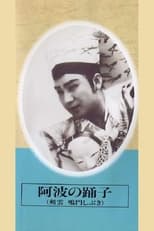
Title: Dancers of Awa
Released: May 21, 1941
Type: Movie
Jurobei, a kaisen tonya (wholesaler in port) in Awa, was wronged and killed on the day of the Dance Festival by the evil merchant & the chamberlin. His brother (Kazuo Hasegawa) vowed vengeance on the day of his brother's death. So every year the villains are worried during the Awa Dance Festival (which is part of the Obon festival), but nothing has ever happened, until seven years later...

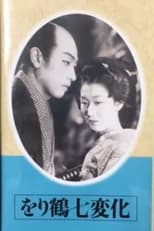
Title: The Seven Changes of a Paper Crane (Part 2)
Released: March 7, 1941
Type: Movie
The story is based on the serial novel by Tsunoda Kikuo.


Title: The Seven Changes of a Paper Crane (Part 1)
Released: January 17, 1941
Type: Movie
The story is based on the serial novel by Tsunoda Kikuo.

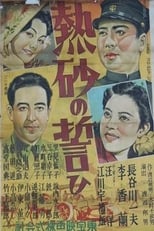
Title: Oath on the Burning Sands
Released: December 25, 1940
Type: Movie
A Japanese army engineer (Hasegawa) on the mainland must put his personal feelings for a beautiful Chinese woman (Ri) aside if he is to succeed at building a highway through the "bandit"- (aka anti-Japanese militia-) infested hinterlands.

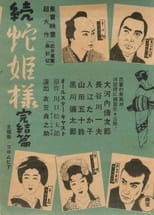


Title: Song of the White Orchid
Released: November 30, 1939
Type: Movie
Song of the White Orchid was a co-production of Toho and Mantetsu, the railway that served the colonial region of Manchuria, and the first film in the Kazuo Hasegawa/Shirley Yamaguchi (Ri Koran) “Continental Trilogy.” Handsome Hasegawa (representing Japan) runs up against an impertinent Yamaguchi (representing the continent); not surprisingly, in the course of the film the woman comes around and realizes the benevolent intentions of the Japanese. In Song of the White Orchid Yamaguchi leaves Hasegawa, who plays an expatriate working for the railway, because of a misunderstanding. She joins a communist guerilla group plotting to blow up the Manchurian railway. Learning of the subterfuge that led to the misunderstanding, she renews her faith in Hasegawa—and by extension Japan—and tries to undermine the plot.

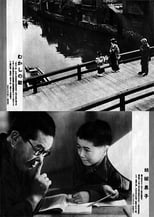

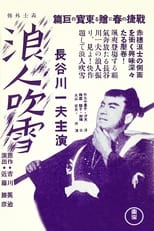
Title: Blizzard Ronin
Released: January 11, 1939
Type: Movie
The film tells about the life of the former vassal of the Ako clan - Fuwa Katsuemon Masatane.


Title: Nangoku taiheiki
Character: Zusho Shozaemon
Released: August 11, 1937
Type: Movie
Japanese film.



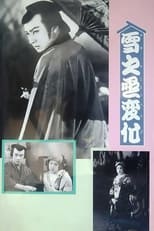
Title: An Actor's Revenge
Character: Dobu
Released: June 27, 1935
Type: Movie
An onnagata (female impersonator) of a Kabuki troupe avenges his parents' deaths. Remade in 1963 as Yukinojô Henge.

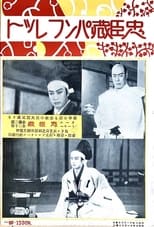

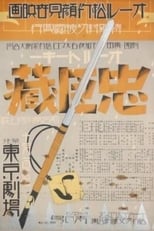
Title: The Loyal 47 Ronin
Character: Uesugi Family Elder
Released: March 1, 1932
Type: Movie
This 1932 adaptation is the earliest sound version of the ever-popular and much-filmed Chushingura story of the loyal 47 retainers who avenged their feudal lord after he was obliged to commit hara-kiri due to the machinations of a villainous courtier. As the first sound version of the classic narrative, the film was something of an event, and employed a stellar cast, who give a roster of memorable performances. Director Teinosuke Kinugasa was primarily a specialist in jidai-geki (period films), such as the internationally celebrated Gate of Hell (Jigokumon, 1953), and although he is now most famous as the maker of the avant-garde silent films A Page of Madness (Kurutta ichipeji, 1926) and Crossroads (Jujiro, 1928), Chushingura is in fact more typical of his output than those experimental works. The film ranked third in that year’s Kinema Junpo critics’ poll, and Joseph Anderson and Donald Richie noted that 'not only the sound but the quick cutting was admired by many critics.


Title: Skull
Released: May 10, 1927
Type: Movie
A rare film which depicts the tragic fate of a Christian lord who fought for his fate in the Edo period. Of note is Utaemon Ichikawa's extraordinary memorable final scenes in which he takes on his enemy with a gash in his forehead and a wild, unkempt mane.

